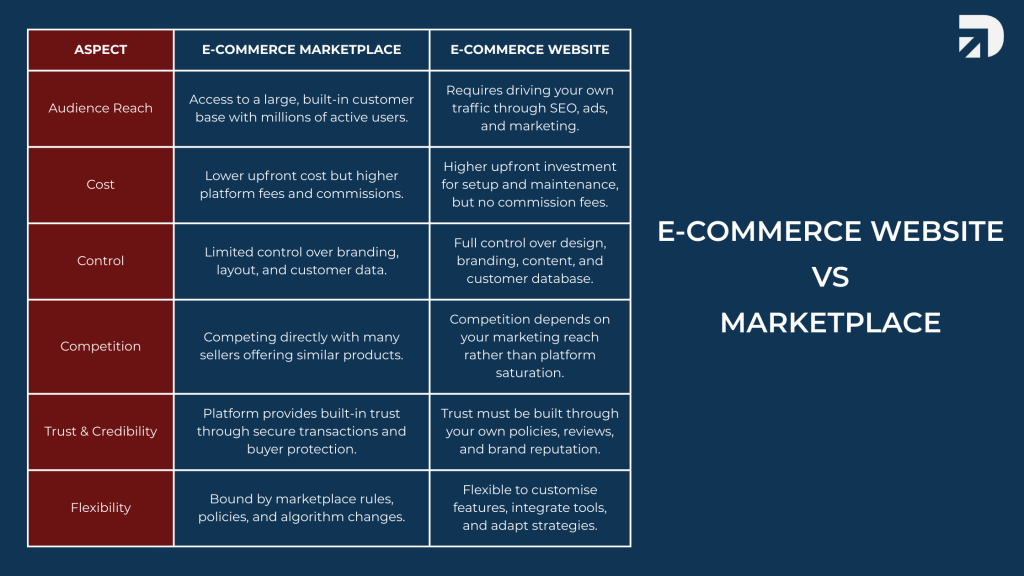The E-Commerce landscape in Southeast Asia is undergoing a major transformation. McKinsey reports that the region’s market has been on a steep growth path since the mid-2010s. Between 2016 and 2021, online sales increased fivefold, averaging 40% growth each year, while E-Commerce’s share of total retail rose from 5% to 20%, with the COVID-19 pandemic accelerating this shift into a new phase.
The growth of South Asia’s E-Commerce was initially anchored by China’s digital consumers. Many early participants were small businesses selling low-value, non-branded clothing, accessories and homeware. As customers became more accustomed to online shopping, flagship stores such as Tmall, which offered only authenticated branded products, marked the transition of E-Commerce from a consumer to consumer (C2C) marketplace to a business to consumer (B2C) platform.
The convergence of social media and E-Commerce has blurred the boundaries between content and commerce. Digital consumers now use social platforms not only to discover products but also to guide their purchasing decisions through reviews and shared content. In China, platforms such as WeChat and later TikTok drove the rise of social commerce, with apparel and personal care accounting for around 30% of total online spending.
As E-Commerce shifts towards social commerce, where content and shopping converge, business owners who choose to run their own E-Commerce website instead of relying solely on marketplaces must adapt by integrating their sites with social platforms.
E-Commerce Marketplace vs E-Commerce Website: What Businesses Need to Know
E-Commerce marketplaces offer an easier entry into social commerce, as platforms like Shopee, Lazada, and TikTok already connect buyers and sellers in one ecosystem app. They also have the flexibility to develop features based on customer behaviour, making the transition to social commerce seamless.
On the other hand, an E-Commerce website operates as a standalone platform where businesses own their customer data and can run independent marketing campaigns. However, it requires additional effort and expertise to integrate directly with social commerce channels.
This raises an important consideration for SMEs: should they use marketplaces or build their own website as the gateway to social commerce? The choice ultimately depends on their business goals:

Building a Scalable Online Store with a Dedicated Website
For businesses with an established company and ambitions to scale their E-Commerce operations, developing a dedicated website is often the first choice, even though it involves a higher investment. A website provides full control over brand identity, design, and visibility, while also offering the opportunity to achieve strong rankings on Google.
Most importantly, businesses retain ownership of valuable customer data such as names, addresses, and contact details. This data enables effective remarketing through performance marketing campaigns, helping to strengthen customer relationships and drive repeat sales. With this control, companies gain the freedom to experiment with both website features and engagement strategies.
However, managing an eCommerce website also brings responsibilities such as safeguarding customer information, ensuring compliance with privacy policies, and handling secure payments and logistics. To address these challenges, it is vital to partner with a trusted web agency that can deliver robust solutions and provide strong cybersecurity measures.
Affordable eCommerce Entry for SMEs
For business owners selling non-branded products without a distinct brand identity, E-Commerce marketplaces offer the lowest cost of entry. However, the downside is the increasing risk of higher platform fees over time, along with growing dependency on the platform since sellers do not fully own their customer data.
How eCommerce Marketplaces and Websites Evolve into Social Commerce
What is Social Commerce?
Social commerce stems from the behaviour of digital consumers, who continue to rely heavily on mobile devices to access the internet. Platforms such as TikTok were designed with social commerce in mind, enabling users to recommend products, influence purchase decisions, and connect sellers directly with potential buyers.
Unlike marketplaces or E-Commerce websites where purchases take place on standalone platforms, social commerce integrates the shopping experience within social media itself. In essence, every social feed becomes a potential storefront, and every user gains the ability to discover, review, and purchase products without leaving the app.
Key Components of Social Commerce:
- In-app shopping: TikTok Shop is reshaping eCommerce by blending entertainment with instant in-app purchases. Launched in Singapore in 2022, it has quickly risen to become one of the top three online shopping platforms by 2025, rivaling Lazada and Shopee. Trend to watch: Micro-influencers and KOLs are driving trust and sales in fashion, skincare, and lifestyle, with authenticity now valued more than celebrity.
- Shoppable livestreams: Livestream selling, first popularised in China, is booming in Southeast Asia via Shopee, TikTok, Facebook, and Instagram Live. These sessions blend entertainment with shopping through demos, discounts, and Q&A. In Singapore, both SMEs and heartland retailers are using livestreams to energise product launches and promotions.Trend to watch: More gamification and AI-driven recommendations will shape the next wave of livestream commerce.
- Influencer collaborations through UGC and Reviews: “Buy what I wear” contents are now tied to instant shopping links. Whether it’s an influencer showcasing a new bag or a beauty guru applying a serum, consumers can buy on the spot. Platforms like TikTok and Instagram allow influencers to link products directly to their videos or Stories, often with time-sensitive discount codes.Trend to Watch: Influencer-affiliate models will be more prevalent, with blockchain-based attribution ensuring transparent commission tracking.
- Social messaging as a sales channel: WhatsApp Business and Telegram Channels are becoming key customer touchpoints. In 2025, it’s common for Singaporean businesses to manage orders, send product catalogues, and even process payments via WhatsApp.Trend to Watch: Integration of WhatsApp Pay or PayNow via WhatsApp is on the horizon, streamlining conversational commerce.
eCommerce marketplaces are gradually transforming their user experience to resemble social commerce.
Marketplaces, by nature being app-based and accessed primarily through mobile devices, are increasingly adopting features that resemble social commerce.
For instance, Shopee introduced Shopee Feed, where sellers can showcase user-generated content from customer reviews. These authentic reviews help strengthen brand trust, while the feed’s interface mirrors social media by allowing users to post questions and share answers.

Additionally, marketplaces can be integrated with Meta Ads (Facebook and Instagram) through a dedicated token, enabling direct promotion of marketplace products via targeted advertising.
On the other hand, TikTok has introduced breakthrough social commerce technology by connecting marketplaces with social media. Through its infinite scroll of videos, combining ads, organic content, affiliate promotions, and livestream selling with product tags for instant purchase, TikTok is reshaping the shopping experience. However, this phenomenon means users on TikTok are less likely to click any links that lead to a website, because everything is already in the app.
E-Commerce Websites in Integrating with Social Commerce
For E-Commerce websites, integration with social platforms extends reach and helps drive organic traffic to the site. Below are some key ways to integrate with social media:
- Instagram & Facebook : Business profiles can showcase products and link directly to websites that will increase traffic. On the advertising side, Meta Ads enable product-focused campaigns designed to convert warm audiences with minimal creative.

- TikTok : Business accounts can link their websites and access to TikTok Ads Manager, that allows to install a website pixel. This pixel tracks visitor actions such as page views and form submissions, providing valuable data for optimisation.
- Pinterest : Functioning like a visual search engine, Pinterest helps users discover brands through images. By connecting website visuals to Pinterest, businesses can drive discovery and traffic, making it essential to upload high-quality content and clickable images
Limitations of Social Commerce and How E-Commerce Website Can Fill the Gap
Social commerce is a third-party platform created by companies looking to monetise their user base. This model leaves business owners with less control over scaling their operations digitally. While social commerce provides easy access to a pool of potential customers, businesses have limited ownership of this data, with no direct access to details such as phone numbers, names or addresses. However, social commerce can still be integrated with websites to extend and enhance the digital customer experience.
One of the biggest challenges is tracking user activity on an E-Commerce website when traffic originates from social media. This requires professional expertise to implement tools such as heatmap plugins, integrate with Google Tag Manager and connect with Google Analytics in order to understand and optimise user behaviour coming from social platforms.
At Digipixel we specialise in designing and developing E-Commerce websites combined with performance-driven media buying. Our solutions ensure complete sales integration from website to social media, helping businesses to maximise customer data, strengthen digital marketing and scale effectively.